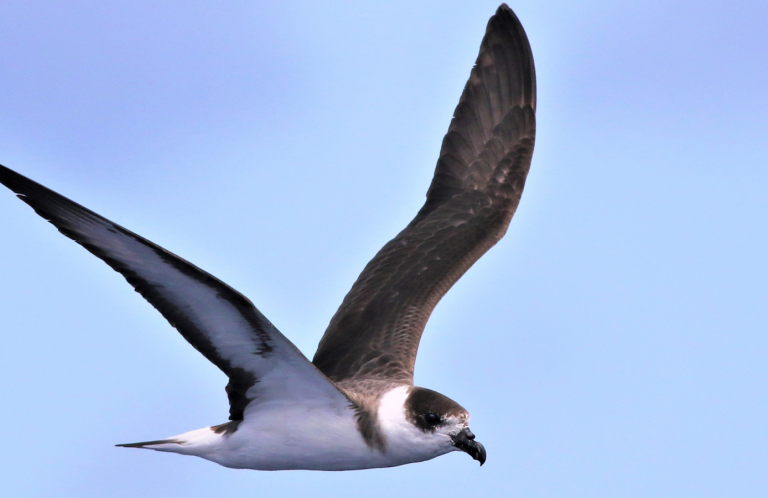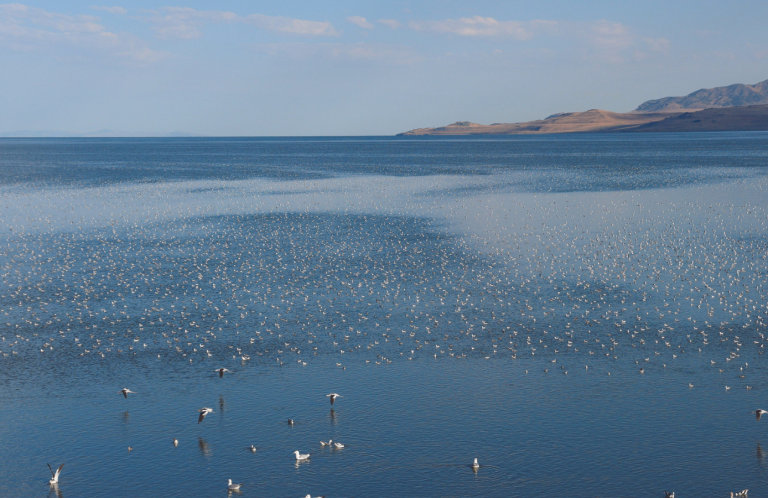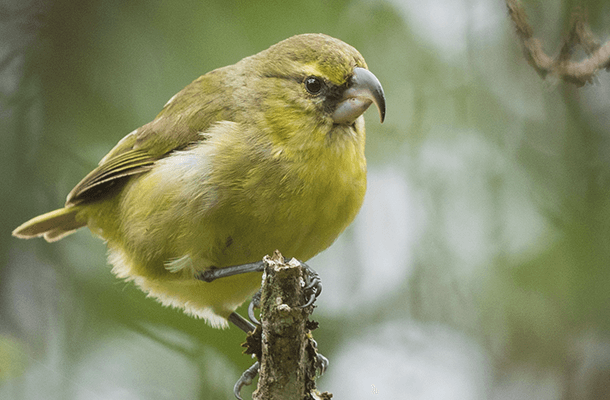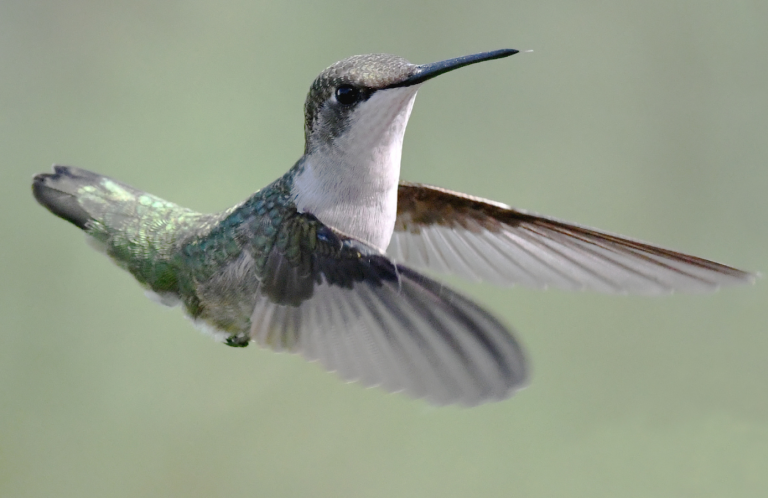Seafood for Seabirds: Puffins and Other Birds Depend on Human Restraint
Birds, like all animals, depend on a healthy environment to provide food sources. But as humans alter the natural landscape, traditional food and feeding dynamics have changed, creating new challenges for vulnerable bird populations. To help these birds, ABC partners with government agencies, other conservation groups, private landowners, and industry representatives to ensure carefully managed habitats — and thus healthy food supplies — are available.
In this, the third of our three-part series on efforts to increase natural food sources for birds, we look at how conservationists are working to ensure that seabirds have the food they need to survive.
Seabirds and the Fruits of the Sea
Insects and seeds are a dietary staple for many land birds, but marine birds dine on the fruits of the sea. Seabirds use a variety of tactics to pursue different marine prey, but many of these birds focus on small “forage fish” species, including anchovy, herring, sardine, and capelin.
In the same way that Cerulean Warblers rely on caterpillars, seabirds — including puffins, penguins, auklets, and murres — depend on oily, protein-rich forage fish to keep their chicks healthy and growing.
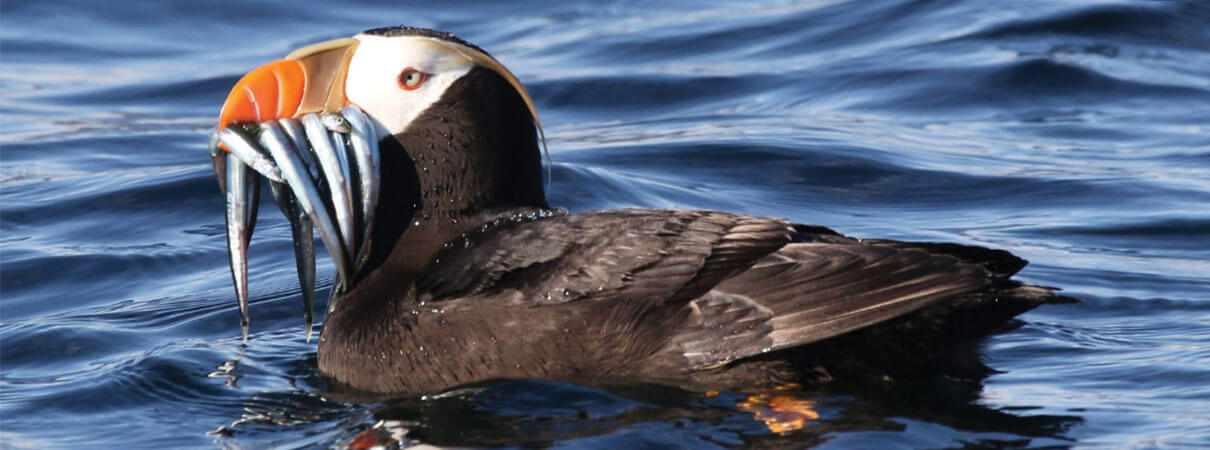
Tufted Puffin. Photo by Robin Corcoran
Hannah Nevins has first-hand knowledge of the importance of forage fish to seabirds. Nevins, ABC's Seabird Program Director, spent two summers on islands in the Gulf of Alaska, working with government scientists to study the diets of Tufted and Horned Puffins and Rhinoceros Auklets.
Tufted Puffins — small diving birds with bright orange bills and feet, white eye masks, and distinctive head plumes — nest in colonies along the North Pacific coast. In the breeding season, they plunge into the chilly ocean water to hunt for sand lance or “sand eels,” which they line up cross-wise in their chunky bills before flying them back to their chicks. “In a good year, the chicks' diet will be 90 to 95 percent sand eels and other forage fish, and the eels will be almost the exact same size,” says Nevins.
But in a bad year, like 1997-1998, when El Niño-warmed waters wreaked havoc on the North Pacific ecosystem, the staple of the puffins' diet was hard to find. “The puffins were bringing back anything — shrimp, octopus, tonguefish … totally weird stuff. They were working really hard and scraping to get by with anything they could find,” she recalls. “We saw a lot of chick mortality.”
The researchers witnessed other forage fish feeders struggling, including kittiwakes and fulmars. “It was doom and gloom out there.”
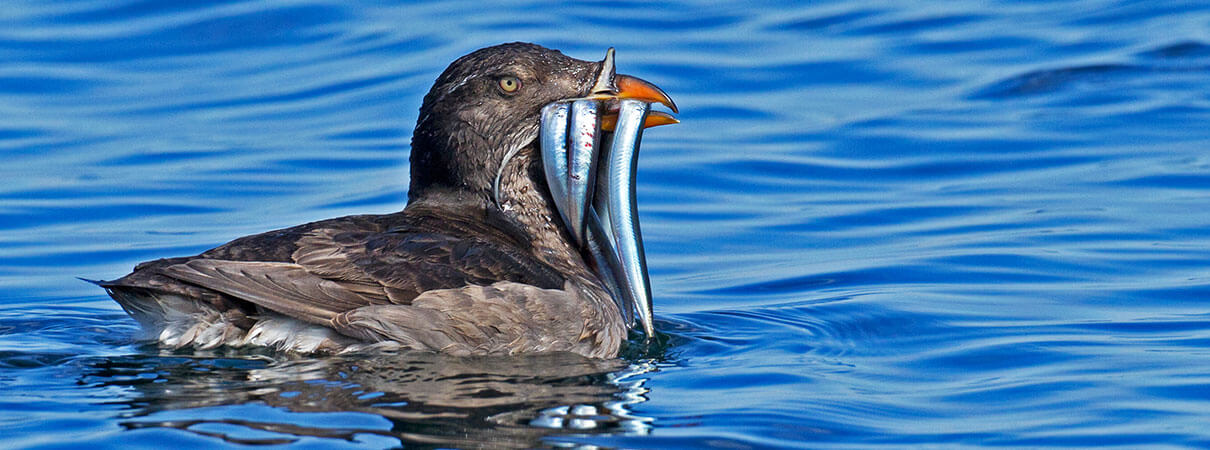
Rhinoceros Auklet. Photo by Robert L. Kothlenbeutel/Shutterstock
Human Seafood Demand Leaves Seabirds Hungry
Nevins obviously can't stop El Niño events, nor create more forage fish. But she can do something about another threat to seabirds: overfishing. There's a huge global demand for seafood products, not just for direct human consumption, but for products such as nutritional supplements and animal feed, Nevins points out. Many commercial fisheries target herring, anchovies, sardines, and other forage fish upon which seabirds rely.
A 2011 study published in Science looked at the connection between forage fish abundance and seabird breeding success in seven ecosystems around the world. The authors found that when fish numbers dropped below one-third of their maximum, seabirds suffered.
Sometimes a dangerous drop in forage fish is caused by a natural event, such as the El Niño effect that Nevins witnessed. But often it is caused by overfishing, especially when fishing occurs near seabird colonies during the breeding season.

Horned Puffin. Photo by Alan Wilson
Saving a Third for the Birds
The Science paper helped spur the “Save a Third for Birds” approach, which was adopted by ABC and other conservation groups. When fisheries organizations set annual quotas for forage fish harvests, ABC urges them to leave at least a third of those fish in the ocean for seabirds and other wildlife.
“You've got to take a precautionary approach to fisheries management where you realize that a third of the biomass is needed to sustain the ongoing functioning of that ecosystem and all the species that are dependent on it,” says Nevins.
Consumers can help support “Save a Third for Birds” by only buying seafood with the Marine Stewardship Council's “blue fish” label, Nevins points out. “ABC also makes recommendations to fishers to adopt techniques to reduce the likelihood that birds will accidentally be caught on lines or in nets,” she says.
Want to learn more about ABC's efforts to help nature feed birds? Check out Are Caterpillars Part Of The Cure For Ailing Cerulean Warblers? and A Banquet For Birds: Conservationists Boost Prairie Birds' Invertebrate Intake the first and second installments in our three-part series on boosting bird diets.
 | Mark Cheater is a writer, editor, and photographer who lives in Greenbelt, Maryland. |





































